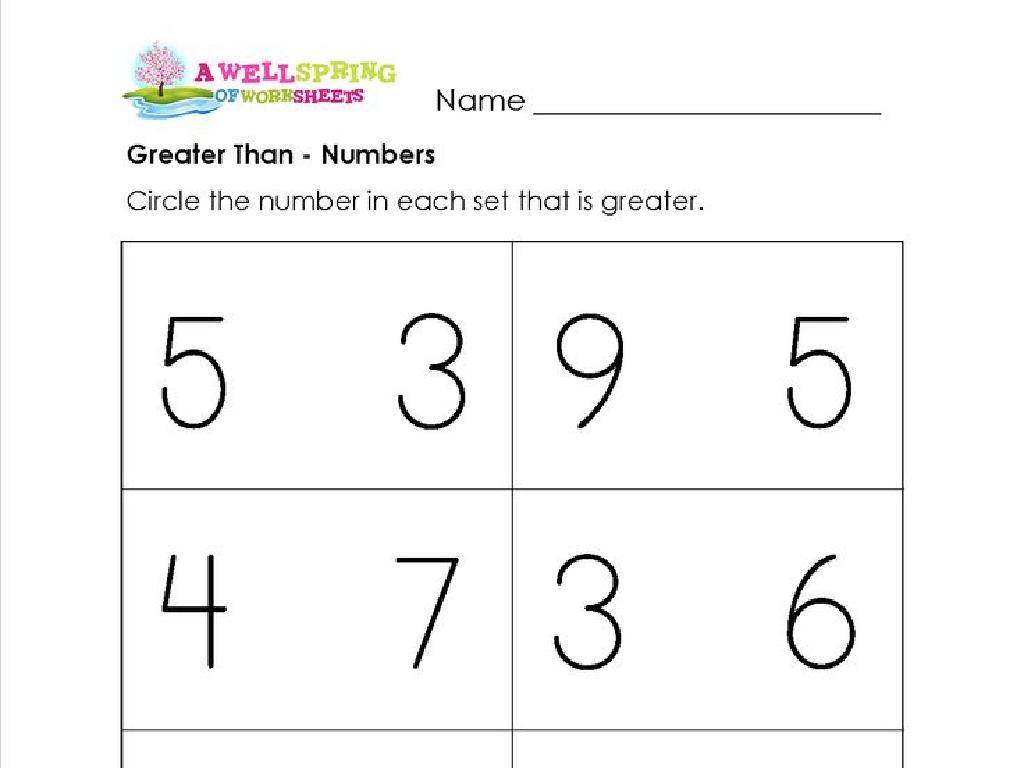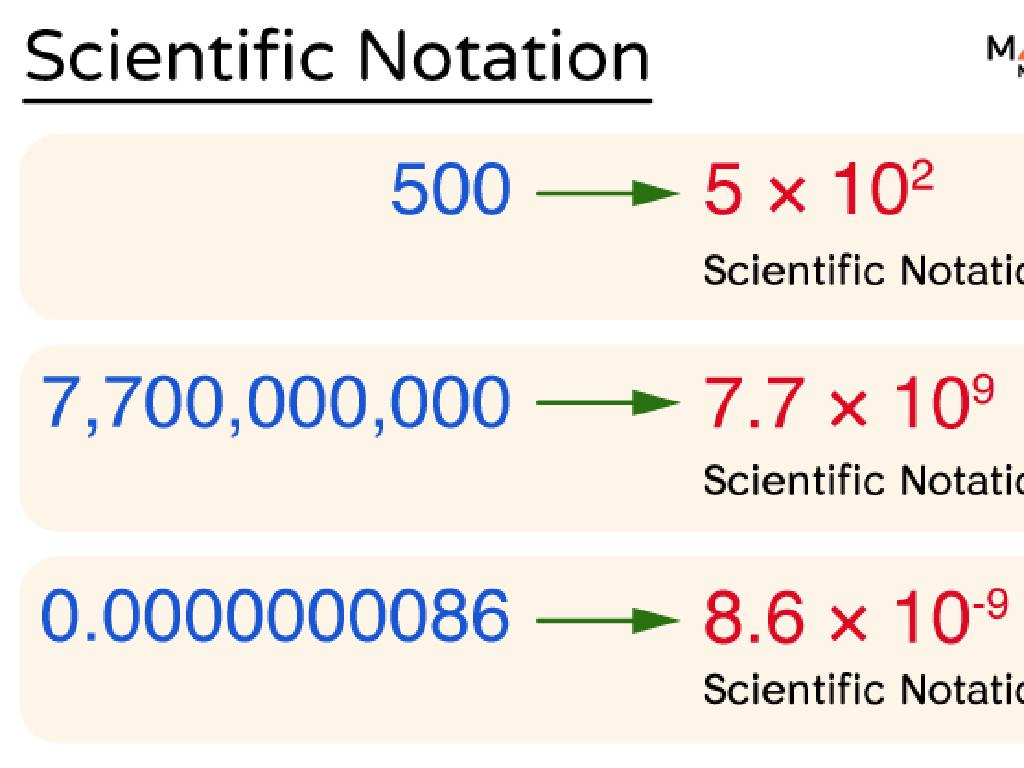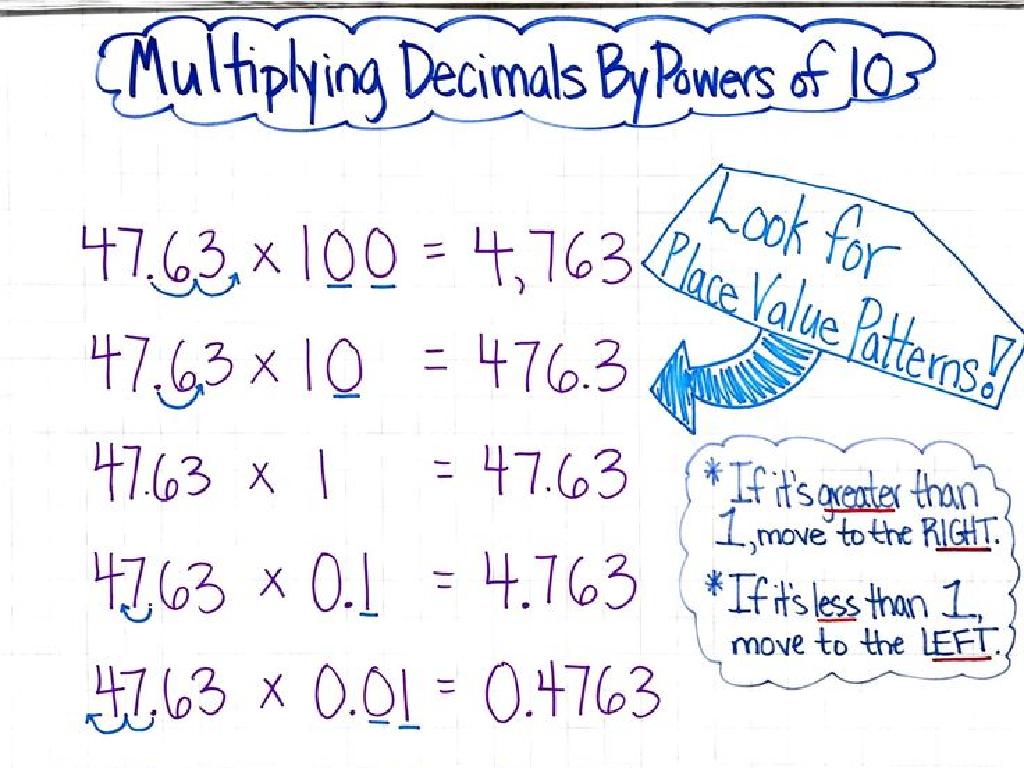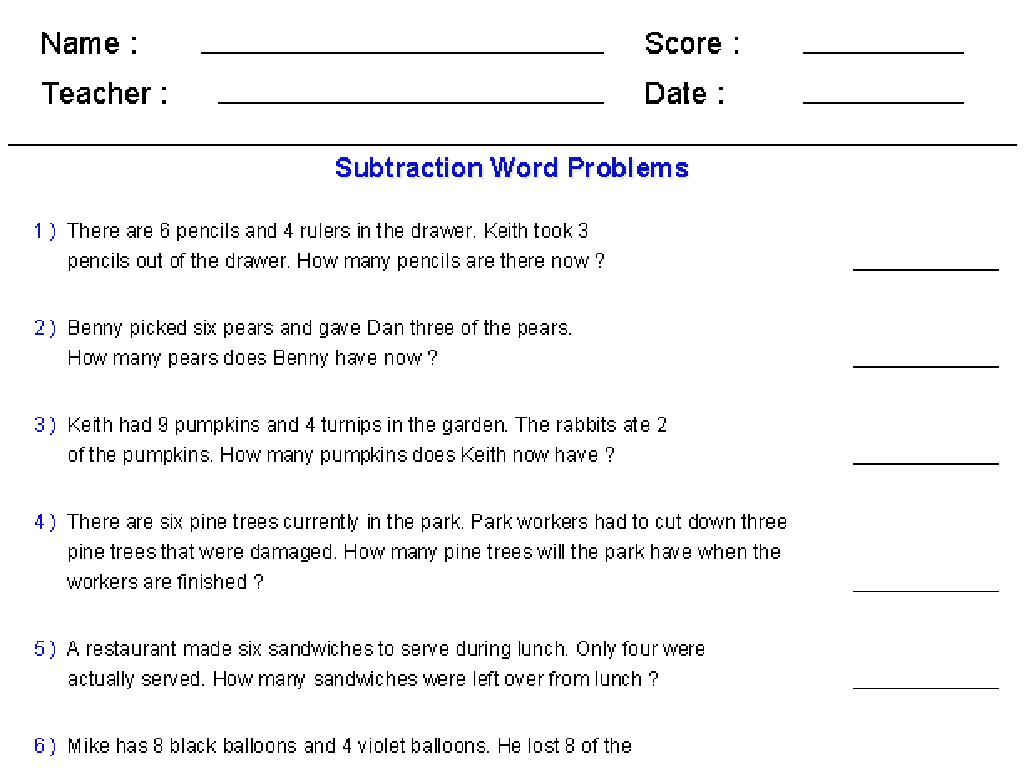Identify Plant Parts And Their Functions
Subject: Science
Grade: Third grade
Topic: Plants
Please LOG IN to download the presentation. Access is available to registered users only.
View More Content
Welcome to the World of Plants!
– Meet our green friends: Plants!
– Why plants are important to us
– Plants give us oxygen, food, and more
– Parts of a plant and their roles
– Roots absorb water, stems support, leaves photosynthesize
– Exciting activities to explore plants
|
This slide is an introduction to the fascinating world of plants, aimed at sparking curiosity among third-grade students. Begin by discussing the various ways plants impact our daily lives, such as providing oxygen, food, and materials. Highlight the key parts of a plant – roots, stems, leaves, and flowers – and their functions. Emphasize that roots anchor the plant and absorb water and nutrients, stems provide support, leaves are the site of photosynthesis, and flowers can lead to fruit and seeds. Engage the students with a preview of the hands-on activities planned, which may include examining plant parts, starting a class garden, or a leaf-rubbing art project. The goal is to create excitement and a foundation for understanding plant biology.
Exploring the World of Plants
– What is a plant?
– Living organisms that grow in earth’s soil and make their own food.
– Types of plants we see
– Trees, flowers, grasses, and more. Each type is special!
– Photosynthesis process
– Using sunlight, water, and air to make sugar for energy.
– Plants as food producers
– Plants use photosynthesis to make food for themselves and us!
|
This slide introduces students to the basic concept of what plants are and their importance. Begin with a simple definition of a plant, emphasizing that they are living things that grow in soil. Highlight the diversity of plant life by discussing different types of plants that students might see in their daily lives. Explain photosynthesis as the process by which plants use sunlight to create their food, which is essential for their growth. Emphasize that without plants, there would be no food for animals or humans. Encourage students to think of examples of plants they have seen and how they might differ in appearance but all share the common ability to make their own food through photosynthesis.
Plant Parts and Their Roles
– Roots absorb water and minerals
– Roots act like straws drinking water from soil
– Stem supports and transports nutrients
– Stems are like elevators moving water and food
– Leaves make food via photosynthesis
– Leaves are the plant’s food factories using sunlight
– Flowers and fruits for reproduction
– Flowers attract pollinators, fruits house seeds
|
This slide aims to educate third-grade students on the fundamental parts of a plant and their specific functions, which are crucial for the plant’s survival. Roots are responsible for anchoring the plant and absorbing water and essential minerals from the soil. The stem acts as the main support system and also serves as a conduit for transporting nutrients throughout the plant. Leaves are involved in photosynthesis, the process by which plants convert sunlight into energy. Flowers and fruits play a key role in the reproductive process; flowers attract pollinators, while fruits protect and help disperse seeds. Understanding these parts helps students appreciate the complexity and interdependence of plant systems. Encourage students to think of examples and observe these parts on real plants.
Roots: The Plant’s Anchor
– Roots keep plants grounded
– Roots act like an anchor, holding the plant in soil
– Roots absorb water and nutrients
– They act like straws, sucking up water and food from the soil
– Taproot vs. Fibrous roots
– Taproot: one main root like a carrot. Fibrous: many small roots like grass
– Roots’ role in plant health
|
This slide introduces the function of roots in plants, emphasizing their anchoring role and their importance in absorbing water and nutrients. Discuss how roots keep the plant stable in the ground, much like the foundation of a house. Explain how roots take in water and food, which is vital for the plant’s growth. Highlight the difference between taproots and fibrous roots, using familiar examples like carrots for taproots and grass for fibrous roots. Encourage students to think about how a plant might look and function without healthy roots, fostering an understanding of the roots’ critical role in overall plant health.
Stem: The Plant’s Highway
– Stem supports and transports
– Like a backbone, it holds the plant upright and moves substances.
– Stems carry water and nutrients
– They act like pipes, moving water from roots to leaves.
– Some stems store food
– Stems like potato tubers keep food that the plant can use later.
– Stems are vital for plant growth
|
The stem is crucial for a plant’s structure and survival, functioning as both a support system and a transportation network. It’s important for students to understand that the stem works like the plant’s circulatory system, carrying water and nutrients from the roots to the leaves and other parts of the plant. Additionally, some stems have the special function of storing food, which the plant can use during times when it’s not making enough food (like during winter). Use examples like celery or a tree trunk to help students visualize the stem’s functions. Activities can include examining different types of stems and discussing what they store or how they support the plant.
Leaves: The Food Factory
– Leaves and photosynthesis
– Leaves use sunlight to make food for the plant.
– Simple photosynthesis process
– Sunlight + water + CO2 = oxygen + glucose.
– Varied leaf shapes and sizes
– Leaves can be long, round, pointy, or heart-shaped.
– Leaf function and health
– Healthy leaves are vital for a plant’s growth.
|
This slide introduces the concept of leaves as the site of photosynthesis, the process by which plants make their own food. Explain photosynthesis in simple terms: leaves use sunlight, water, and carbon dioxide to produce oxygen and glucose, a sugar that feeds the plant. Highlight the diversity of leaf shapes and sizes, and how each is adapted to its environment. Emphasize the importance of leaves to the overall health of the plant, as they are essential for photosynthesis. Encourage students to observe leaves around them and notice their different shapes and sizes.
Flowers and Fruits: The Reproducers
– Flowers: Plant’s reproductive part
– They attract pollinators like bees with their color and scent.
– Pollination: Plant reproduction process
– Transfer of pollen from male to female parts of flowers.
– Fruits: Seed protectors and dispersers
– Fruits develop from flowers and contain seeds, aiding in spreading new plants.
|
This slide introduces the reproductive functions of flowers and fruits in plants. Flowers are not just for beauty; they play a crucial role in the reproduction of plants by attracting pollinators, which is essential for pollination. Pollination is the process where pollen is transferred from the male part of the flower to the female part, leading to the creation of seeds. Fruits are the mature ovaries of flowers that encase the seeds, providing protection. They also play a significant role in the dispersal of seeds, which can occur through various means such as being eaten by animals. Encourage students to think about how fruits they eat are part of a plant’s life cycle. In the next class, students can bring in different fruits and discuss how they might help in seed dispersal.
Let’s Review: Plant Parts & Functions
– Recap: Parts of a plant
– Roots, stem, leaves, flowers, and fruits
– Functions of each part
– Roots absorb water, stem supports, leaves make food, flowers attract pollinators, fruits contain seeds
– Interactive Q&A session
– Share what we’ve learned
|
This slide is aimed at reviewing the different parts of a plant and their respective functions. Start by recapping the main parts: roots, stem, leaves, flowers, and fruits. Explain the role of each part: roots anchor the plant and absorb water and nutrients; the stem provides support; leaves are responsible for photosynthesis; flowers attract pollinators; and fruits protect and help disperse seeds. Follow the recap with an interactive Q&A session to engage the students and assess their understanding. Encourage them to share what they’ve learned about plant parts and their functions. This will help reinforce their knowledge and ensure they are prepared for the next lesson.
Class Activity: Plant Detective
– Explore plants around school
– Identify plant parts in real life
– Look for roots, stems, leaves, flowers, and seeds
– Draw and label plant parts
– Use your science notebook for drawings
– Share your plant detective findings
|
This activity is designed to get students actively involved in learning by becoming ‘plant detectives’. They will explore the school grounds to observe and identify different parts of plants. Provide guidance on what to look for: roots, stems, leaves, flowers, and seeds. Encourage them to touch and feel the textures of the plants. After the exploration, students should draw and label the parts of the plant they found in their science notebooks. Back in the classroom, have students share their findings with the class. This will help reinforce their understanding of plant anatomy and the function of each part. Possible variations of the activity could include working in pairs, creating a plant part collage, or even starting a class herbarium with collected plant samples.
Plant Exploration: Homework & Next Steps
– Excellent work, future botanists!
– Homework: Sketch a plant and label its parts
– Find any plant and draw the roots, stem, leaves, and flower.
– Discover: How do seeds turn into plants?
– We’ll learn the journey of a seed growing into a full plant.
– Get ready to share your drawings!
– Be prepared to present your plant part sketches in class.
|
Today’s class was an exciting journey through the world of plants and their parts. For homework, students are tasked with finding a plant around their home, drawing it, and labeling each part to reinforce their understanding. This hands-on activity will help solidify their knowledge of plant anatomy. In our next class, we will explore the fascinating process of how plants grow from seeds, which will include discussions on germination, growth stages, and the factors that affect plant development. Encourage students to be creative with their drawings and to be ready to discuss their observations in the next class.






